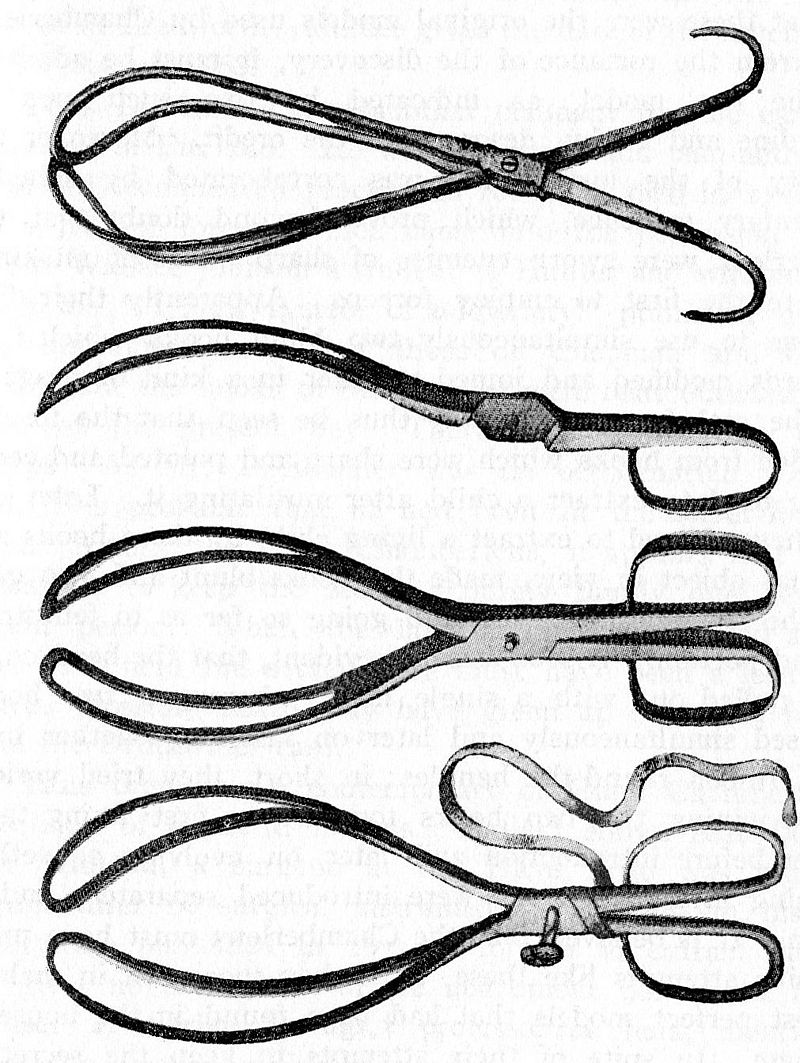Perinatal mental health
Article curated by Rowena Fletcher-Wood
Pregnancy is a time of great vulnerability, so it may come as no surprise that mental health conditions are higher for women on average around pregnancy (including during and just after) than any other time. Women's mental health, however, remains misunderstood and chronically underdiagnosed, as do the instances of pregnancy- or birth-centred mental health conditions in men.

Many women’s conditions such as complicated births are treated physically, but the mental aspect is under-researched and rarely addressed, including birth trauma, postnatal depression, and grief following a miscarriage.


 3
3Birth trauma
PTSD (post-traumatic stress disorder) is still a condition associated with soldiers. Men. But every year, estimates suggest 4% of births cause births cause maternal PTSD[1]. We call this birth trauma.
Birth trauma is triggered by intense physical ordeals, such as very slow/fast labour, over- or under-medication or gruelling interventions, and psychological ordeals, such as feeling lost control or dignity, not being heard, having medical things done to them they didn’t consent to or didn’t have explained to them, or not having information about the health of their baby when in a vulnerable position.
Symptoms include flashbacks, high anxiety, low mood and avoidant behaviours. It can affect sex lives, further childbearing, attendance at smear tests, bonding with their baby, and breastfeeding.
Birth trauma is under-reported, and many who report it won’t be treated or will be misdiagnosed with and treated for postnatal depression. The primary treatment is talking therapy, which is still being explored.
Researchers have suggested taking a preventative approach: screening women to identify who is most at risk of birth trauma. Initial findings suggest there could be structural indicators in the brain. The amygdala may be 6% larger in soldiers with PTSD than those without, although it’s unclear whether this is caused by PTSD or makes you susceptible to it, and whether this is also true for birth trauma. Some researchers are looking into whether existing PTSD theories are applicable to birth trauma or not, and whether research into childbirth could help us understand more about PTSD.
Other research is exploring the validity of birth memories. Hormones released after birth may help a woman gradually forget the pain of labour[2], although the literature suggests memories are still extensive, and having a negative experience of childbirth may prolong memories[3]. Others are looking into the unconscious brain or “the shadow” are affected by birth traumas.


 3
3
It’s now thought that it may affect fathers who were present at the birth as well as mothers.


 2
2
Postnatal depression
Postnatal depression is thought to occur in ~1 in 10 mothers, making it a common form of mental illness. The onset and peak of the illness may be weeks or even months after the birth of a baby, and the condition lasts for weeks, months, or longer. The condition is characterised by persistent negative feelings – towards yourself, your baby, and things you previously had an interest in. Most parents find their inability to bond to their baby most upsetting, and many feel guilty, hopeless, and even suicidal. Physical symptoms include disturbed sleep, tiredness, increased or decreased appetite, and difficulty decision-making.
We don’t know what causes it. Although it’s associated with hormonal changes, such as a drop in one hormone called allopregnanolone, these alone can’t explain everything. In the past, people believed that pregnancy hormones were protective against depression, and it was simply something new mothers couldn’t get – leading to many undiagnosed sufferers[4]. Scientists now think that a range of physical, emotional, genetic, and social factors contribute[5]. Risk factors include previous mental illness, physical or psychological trauma or abuse, stress, complications during childbirth, and use of drugs, cigarettes or other medications. Formula-feedings, low self-esteem, sleep deprivation and painful pre-menstrual symptoms may also cause or worsen the condition[6][7][8]. In one project, findings showed that the most important factor was how attached a mother was to her baby before it was born.
When the woman is depressed before the baby is born, this can correlate with low birth weight, poor growth, reduced activity, infections, difficulties breastfeeding, and even spontaneous abortion[9].
Learn more about /mental health.


 3
3Men remain chronically underdiagnosed. They even experience hormone changes (such as drops in testosterone) when they become fathers. A 2016 literature study concluded that postnatal depression occurs in around 8% of men – almost as much as women[10]. However, screening tools for detecting it (the “Edinburgh scale”) are aimed at women, and may be less reliable in men[11][12].


 3
3There is no conclusive medication used to treat postnatal depression. Tricyclic antidepressants (TCAs) and selective serotonin reuptake inhibitors (SSRIs) are safe for pregnancy and breastfeeding, and seem to be effective after 2-3 weeks, but there is some suggestion that stopping the medication can lead to drug withdrawal symptoms such as jitters and seizures in the babies. Sometimes, sodium valproate is used to treat depression before pregnancy, but this medication can cause severe neurological damage in foetuses, and isn’t prescribed for women who develop depression during pregnancy or after.
Hormone therapies are being explored, and oestradiol patches might be effective. However, increased oestrogen can increase the risk of blot clots in new mothers, and the effect on breastfeeding is yet to be studied[13]. The newest drug is brexanolone, a synthetic version of the allopregnanolone hormone. Trials suggest it’s effective, but it’s injected, and, when administered, can lead to unconsciousness.
Drug alternatives includes psychological treatments such as cognitive behavioural therapy (CBT), guided self-help, interpersonal therapy, problem-solving therapy and psychodynamic psychotherapy. These talking therapies have been shown to be effective in mental health treatments, but vary between individuals.
Others have tried acupuncture, electroconvulsive therapy (ECT), or transcranial magnetic stimulation (rTMS). Evidence is inconclusive[14]. Lifestyle changes include bright light exposure, taking omega-3 fatty acid or vitamin D supplements, avoiding caffeine, and reducing stress[15] [16].
Others have pointed out that an effective screening programme – which would cost £20 million a year in the UK – would massively reduce the £8 billion a year maternal mental health bill.


 3
3
One antidepressant is St John's wort (hypericum perforatum), a natural herb indigenous to the UK that can be used as a “dietary supplement” or over-the-counter medical treatment for mild depression and anxiety. It’s thought to work like a standard antidepressant, inhibiting serotonin reuptake. But there's still a lot we don't know about St John's wort. The chemical content can vary widely according to the size and health of the plant, the harvesting and drying processes, packaging and storage. It is a long-acting agent, with a half-life of 26.5 hours in the human body.
Not enough research has been done on the use of St John's wort to know whether it effects pregnant women or their babies. However, it has been found to increase uterine muscle tone in laboratory animals, and could potentially cause uterine contractions. One small study found higher rates of miscarriage in pregnancies where the mothers were taking St John's wort compared to another antidepressant or no antidepressant, but the rates between the three groups were not significantly different. There are no studies looking at withdrawal symptoms or effects on the baby’s behaviour or development.



Perinatal (or antenatal) depression
Depression that arises during pregnancy is known as perinatal (or antenatal) depression. Scientists think it affects 7% to 20% of women, but estimates vary around the world[17].
Learn more about Depression During and After Pregnancy (Things We Don’t Know about Pregnancy Series #18).


 2
2Rates of miscarriage (“spontaneous abortion”) are higher in women with perinatal depression. Scientists think this is linked to the condition rather than medication, as initial studies suggest rates are higher for women not undergoing treatment[18].


 2
2


 3
3
The Avon Longitudinal Study of Parents and Children looked at 3,176 father and child pairs, where they found not only did 1 in 20 fathers developed postnatal depression, but this correlated with a small but significant increased risk of daughters (but not sons!) developing depression at age 18[20]. Scientists are unsure why the effect is only seen in girls.


 3
3Postpartum bipolar disorder
Postpartum bipolar disorder, the least well-known postpartum mental health disorder, is characterised by mood episodes of mania, hypomania or depression that interfere with everyday life and performing ordinary tasks. We don’t know the cause.


 3
3Postnatal (puerperal) psychosis
Postnatal (puerperal) psychosis is an uncommon but severe condition, which can include low mood – or manic mood – delusions, hallucinations, and out-of-character behaviour. No one’s sure what causes it, but trauma or a history of other mental illnesses are risk indicators.
Birth trauma, a type of PTSD (post-traumatic stress disorder) is mostly triggered by loss of control during childbirth, including not being heard, having medical things done without consent, or not knowing about the health of the baby.


 3
3Baby brain
![Lateral View of the Brain By BruceBlaus [CC BY 3.0], via Wikimedia Commons](/img/sci/Blausen_0101_Brain_LateralView_512.png)
Most studies are very small, and study different areas of memory to each other (as well as attention span and executive function) on women at different stages of pregnancy or early motherhood[21][22][23][24]. Often, measured declines that are statistically significant still fit within the ordinary ranges of working adult memory. Multiple studies, however, have shown that having a baby and being a parent changes your brain, especially in later stages of pregnancy and parenthood, when your brain is the most plastic it ever is in adulthood[25][26][27]. And some suggests it improves memory and brain function[28][29]. This may be because, as some have suggested, baby brain is an important adaptive mechanism, promoting some neurological abilities, such as emotional bonding, at the expense of others.
The most unexplored areas of the baby brain phenomenon are what happens after the immediate postpartum period, and the underlying mechanism behind it. Interestingly, whilst losses in grey matter have been reported in the hippocampus area of mothers’ brains, two years later, brains look the same again as they did before, suggesting that changes may not be permanent[30]!
What are the mechanisms behind baby brain?
Various studies propose different ideas. Some who have suggested that the effects are not “real” think they could be explained by other consequences of pregnancy and early parenthood, including tiredness and disturbed sleep, stress, morning sickness, and mood changes.
Others think hormones are responsible, which rise to 15-40 times their usual levels during pregnancy and effect neurons in the brain! In particular, oxytocin, which has shown links to behaviour, learning and memory in animals.


 2
2
Nesting
Is nesting, cleaning, organising, decorating and stockpiling in preparation for a baby biologically or socially driven?
Animals nest from birds to fish, rodents, cats, dogs, pigs, and 80% of pregnant women. Pregnant dogs will steal blankets, cats will climb into haylofts, rabbits pluck out their own fur to line the burrow, sows leave the herd to travel up to 6.5km[31], and broody birds will insist on constant nest sitting. Marsupials don’t nest. They carry their young with them in a pouch, and scientists think this might be why.
When a pregnant female animal starts to nest, her oestradiol, prolactin and progesterone levels soar. When she stops, her oxytocin is high – the hormone responsible for contractions in labour. Shortly after the birth, progesterone levels drop, oestradiol stays steady, and prolactin keeps going up. The exact timings vary from species to species[32].
But not all nesters are pregnant females. Male and non-pregnant female animals sometimes nest. Scientists think this behaviour is performed to regulate temperature or endear themselves to a potential mate.
Up to 90% of men in a relationship with a pregnant woman show some kind of symptom (weight gain, morning sickness, mood swings, fatigue, disturbed sleep, labour pains(!)…) – called sympathetic pregnancy, or sometimes couvade syndrome. Some doctors think this is psychosomatic, whilst others think there may be stress hormones behind it[33].


 2
2
Mental health problems will affect 1 in 4 of us every year, and yet little is known about underlying causes. A better understanding of the brain changes that occur, the influence of our genes and environmental triggers could help to improve the lives of sufferers, and perhaps even introduce preventative measures for those who are most at risk. For more information on on depression during and after pregnancy, check out our blog post, or look at our article on pregnancy.
This article was written by the Things We Don’t Know editorial team, with contributions from Rowena Fletcher-Wood.
This article was first published on 2021-10-04 and was last updated on 2021-10-04.
References
why don’t all references have links?
[1] Yildiz, Pelin Dikmen, Susan Ayers, and Louise Phillips. The prevalence of posttraumatic stress disorder in pregnancy and after birth: A systematic review and meta-analysis. Journal of affective disorders 208 (2017): 634-645.
[2] Niven, Catherine A., and Tricia Murphy‐Black. "Memory for labor pain: a review of the literature." Birth 27.4 (2000): 244-253.
[3] Waldenström, Ulla, and Erica Schytt. A longitudinal study of women’s memory of labour pain—from 2 months to 5 years after the birth. BJOG: An International Journal of Obstetrics & Gynaecology 116.4 (2009): 577-583.
[4] Mukherjee S, Trepka MJ, Pierre-Victor D, Bahelah R, Avent T (September 2016). Racial/Ethnic Disparities in Antenatal Depression in the United States: A Systematic Review. Maternal and Child Health Journal. 20 (9): 1780–97. doi:10.1007/s10995-016-1989-x.
[5] Grace SL, Evindar A, Stewart DE (November 2003). The effect of postpartum depression on child cognitive development and behavior: a review and critical analysis of the literature. Archives of Women's Mental Health. 6 (4): 263–74. doi:10.1007/s00737-003-0024-6.
[6] McCoy SJ, Beal JM, Shipman SB, Payton ME, Watson GH (April 2006). Risk factors for postpartum depression: a retrospective investigation at 4-weeks postnatal and a review of the literature. The Journal of the American Osteopathic Association. 106 (4): 193–8.
[7] Stewart DE, Vigod SN (January 2019). Postpartum Depression: Pathophysiology, Treatment, and Emerging Therapeutics. Annual Review of Medicine. 70 (1): 183–196. doi:10.1146/annurev-med-041217-011106.
[8] Howell EA, Mora P, Leventhal H (March 2006). Correlates of early postpartum depressive symptoms. Maternal and Child Health Journal. 10 (2): 149–57. doi:10.1007/s10995-005-0048-9.
[9] Chung EK, McCollum KF, Elo IT, Lee HJ, Culhane JF (June 2004). Maternal depressive symptoms and infant health practices among low-income women. Pediatrics. 113 (6): e523-9. doi:10.1542/peds.113.6.e523.
[10] Cameron, Emily E., Ivan D. Sedov, and Lianne M. Tomfohr-Madsen. Prevalence of paternal depression in pregnancy and the postpartum: an updated meta-analysis. Journal of affective disorders 206 (2016): 189-203. 10.1016/j.jad.2016.07.044.
[11] JL Cox, JM Holden, R Sagovsky. Detection of Postnatal Depression: Development of the 10-item Edinburgh Postnatal Depression Scale. 150: British Journal of Psychiatry 782-786. 1987. Doi: 10.1192/bjp.150.6.782.
[12] KL Wisner, BL Parry, CM Piontek. Postpartum Depression. 347(3): N Engl J Med 194-199. 2002. doi: 10.1056/NEJMcp011542.
[13] Fitelson E, Kim S, Baker AS, Leight K (December 2010). Treatment of postpartum depression: clinical, psychological and pharmacological options. International Journal of Women's Health. 3: 1–14. doi:10.2147/IJWH.S6938.
[14] Cole J, Bright K, Gagnon L, McGirr A (August 2019). A systematic review of the safety and effectiveness of repetitive transcranial magnetic stimulation in the treatment of peripartum depression. Journal of Psychiatric Research. 115: 142–150. doi:10.1016/j.jpsychires.2019.05.015.
[15] Dennis CL, Dowswell T (July 2013). Interventions (other than pharmacological, psychosocial or psychological) for treating antenatal depression. The Cochrane Database of Systematic Reviews. 7 (7): CD006795. doi:10.1002/14651858.CD006795.pub3.
[16] Aghajafari F, Letourneau N, Mahinpey N, Cosic N, Giesbrecht G (April 2018). Vitamin D Deficiency and Antenatal and Postpartum Depression: A Systematic Review. Nutrients. 10 (4): 478. doi:10.3390/nu10040478.
[17] Gavin NI, Gaynes BN, Lohr KN, Meltzer-Brody S, Gartlehner G, Swinson T (November 2005). Perinatal depression: a systematic review of prevalence and incidence. Obstetrics and Gynecology. 106 (5 Pt 1): 1071–83.
[18] Johansen, Rie Laurine Rosenthal; Mortensen, Laust Hvas; Andersen, Anne-Marie Nybo; Hansen, Anne Vinkel; Strandberg‐Larsen, Katrine (2015). Maternal Use of Selective Serotonin Reuptake Inhibitors and Risk of Miscarriage – Assessing Potential Biases. Paediatric and Perinatal Epidemiology. 29 (1): 72–81. doi:10.1111/ppe.12160. ISSN 1365-3016.
[19] Liu, Can, et al. Prenatal parental depression and preterm birth: a national cohort study. BJOG: An International Journal of Obstetrics & Gynaecology 123.12 (2016): 1973-1982. doi: 10.1111/1471-0528.13891.
[20] Gutierrez-Galve, Leticia, et al. Association of maternal and paternal depression in the postnatal period with offspring depression at age 18 years. JAMA psychiatry 76.3 (2019): 290-296.
[21] de Groot, Renate HM, et al. Differences in cognitive performance during pregnancy and early motherhood. Psychological Medicine 36.7 (2006): 1023-1032.
[22] Christensen, Helen, Liana S. Leach, and Andrew Mackinnon. Cognition in pregnancy and motherhood: prospective cohort study. The British Journal of Psychiatry 196.2 (2010): 126-132.
[23] Heinrichs, Markus, et al. Selective amnesic effects of oxytocin on human memory. Physiology & behavior 83.1 (2004): 31-38.
[24] Brett, Matthew, and Sallie Baxendale. Motherhood and memory: a review. Psychoneuroendocrinology 26.4 (2001): 339-362.
[25] Mascaro, Jennifer S., et al. Child gender influences paternal behavior, language, and brain function. Behavioral neuroscience 131.3 (2017): 262.
[26] Barha, Cindy K., and Liisa AM Galea. The maternal 'baby brain' revisited. Nature neuroscience 20.2 (2017): 134.
[27] Kinsley, Craig H., et al. Motherhood and the hormones of pregnancy modify concentrations of hippocampal neuronal dendritic spines. Hormones and behavior 49.2 (2006): 131-142.
[28] Gatewood, Jessica D., et al. Motherhood mitigates aging-related decrements in learning and memory and positively affects brain aging in the rat. Brain research bulletin 66.2 (2005): 91-98.
[29] Tomizawa, Kazuhito, et al. Oxytocin improves long-lasting spatial memory during motherhood through MAP kinase cascade. Nature neuroscience 6.4 (2003): 384.
[30] Davies, Sasha J., et al. Cognitive impairment during pregnancy: a meta‐analysis. Medical Journal of Australia 208.1 (2018): 35-40.
[31] Wischner, D. Kemper, N. Krieter, J. (2009). Nest-building behvaiour in sows and consequences for pig husbandry. Livestock Science. 124 (1–3): 1–8. doi: 10.1016/j.livsci.2009.01.015.
[32] Woodside, B., and Leon, M. (1980). Thermoendocrine influences on maternal nesting behavior in rats. Journal of Comparative and Physiological Psychology, 94(1), 41-60. doi: 10.1037/h0077652.
[33] Klein, Hilary (1991). Couvade syndrome: Male counterpart to pregnancy. International Journal of Psychiatry in Medicine. 21 (1): 57–69. doi:10.2190/FLE0-92JM-C4CN-J83T. PMID 2066258.
Recent Perinatal mental health News
Get customised news updates on your homepage by subscribing to articles











